One Hundred Years of Haiti Resistance to US Imperialism in All its Faces
Kanga Mundele, Kanga Bafyòti, Kanga Ndòki
End the US Occupation of Haiti behind UN guns and the NGO fronts
December 17, 2014 marks one hundred years since the United States invaded Haiti and at the point of guns the US Marines carried out Haiti’s gold reserves. One hundred years later, Haiti continues the resistance.
On July 28, 1915 the Marines officially began the US occupation of Haiti, stayed for 19 years, dropped bombs on unarmed Haiti peasants, tortured, raped, maimed and slaughtered tens of thousands and virtually re-enslaved Haiti with its white supremacist ideology, physical tyranny.
Haiti continues its protest against foreign occupation and their puppet government. Calls for real elections are taking down the puppet Martelly-Lamothe regime. But, Haiti freedom fighters are also keeping in mind that US-style electoral politics is false hope for the masses everywhere, including the United States.
Kanga Mundele, Kanga Bafyòti, Kanga Ndòki
This post is centered on the unseen powers in Haiti. The Mundele (Category One – the stranger/colonist/white nations) that the Martelly-Lamothe regime (Category Zero/Bafyòti) serve as well as the deep politics (Ndòki) Haiti citizens must confront regarding the global profit-over-people system.
The Bill Clinton/George Soros NGOs, USAID and the UN are tools of empire (Ndòki) that will nullify the gains of the Haiti protestors after Martelly-Lamothe are gone. If there is to be a lasting change in Haiti, and in the living standards of the masses, Haiti must make plans beyond electoral politics.
To do this means facing not only Category Zero, the Black collaborators (Bafyòti/Uncle Toms) represented by the surface power of Martelly-Lamothe. But the deeper, economic power of an even deadlier group of collaborators, the multi-billionaire Haiti oligarchs (Bafyòti) as well as the Ndòki– meaning the institutional forces of empire as represented by the NGOs (the charitable industrial complex), the pèpè educational system, the bought-out media, foreign religions, neoliberal economics, unfair trade, destruction of Haiti local economy, the world money changers/Banksters and plutocrats, their drugs, germs, prison industrial complex, human rights industrial complex and GMO foods, et al.
Haiti oligarchs are the wealthiest billionaires in the Caribbean. They make their living exploiting the poor in Haiti – their land, labor, resources. They promote institutional underdevelopment. These Christian or Jewish “Arabs” (i.e. The families of Acra, Apaid, Bigio, Boulos, Baussan, Brandt, Mevs, Madsen, et al.) are the middlemen for empire and require as much scrutiny and protests as the Laurent-Lamothe regime who serve them and Western imperialism. (This clip was taken by cell phone by an audience member at a recent Ezili Dantò, university presentation, on Haiti.)
One Hundred Years of Resistance
One hundred years ago on December 17, 1914 Citigroup (Citibank) stole Haiti’s gold reserves.
The US sent the Marines to Haiti to take Haiti’s gold reserves and transport it to the Wall Street vaults of the National City Bank of New York, as Citigroup was then called.
On December 17, 2014 Haitians mark this theft of Haiti monies by the wealthy United States, demanding the US make reparations for that crime as well as the continued crimes of occupation and taking of Haiti assets under Bill Clinton and his Wall Street cronies. The assassination of Haiti’s founding father, Jean Jacques Dessalines (Janjak Desalin) in 1806 brought neocolonialism to Haiti through France’s Independent debt andecclesiastical colonialism. Since then, Haiti’s entire economy constantly gets robbed by the US-Euro nations to keep Haiti’s people in endless debt, dependency and vicious domination.
A recent statement made about Citigroup by US Senator Elizabeth Warren gives a glimpse of the bottomless greed of the one percent of the population. I note Senator Warren’s statements on Citigroup not as an approval of her bid for the US presidency in 2016 nor as an endorsement of the US politicos’ simplistic villain/hero pathology – their hypocritical Democrat/Republican duopoly. But simply to help explain how powerful Citigroup/Citibank is today. How it continues its traditional colonial thievery. The US public still does not realize they’re the colonized subjects of the US corporatocracy and their feudal lord lobbyists. (See video: Remarks by Senator Warren on Citigroup and its bailout provision.)
Warren remarks concerned how Citigroup lobbyists manipulated major US legislation to assure another bailout for itself. The City bank boys operate like this globally, including being a good part of the reason why Haiti and the global South are kept contained in poverty.
Unfettered capitalism doesn’t work. It must constantly steal. The new term for theft and Wall Street parasitic behavior is “bailout.”
See the video clip: The Beautiful Butchers of Haiti: Mrs. Clinton, Susan Rice, Cheryl Mills & The Arabs
In this clip, human rights attorney, Ezili Dantò discuss two slides from “The Quiet Genocide in Haiti” presentation.
Slide one: Is on the Clinton-nites in Haiti – Mundele Hillary Clinton, Bafyòti Susan Rice and Bafyòti Cheryl Mills
Slide two: Is about the subcontracted Haitians who are middlemen for empire. They’re Haiti’s mercenary families.
Speaking about the first US occupation of Haiti, Major General Smedley Butler once said:
“War is a racket…I helped make Haiti and Cuba a decent place for the National City bank boys.” — Smedley Butler, US Marine, 1933
It’s no longer politically correct to spout Manifest Destiny, Gunboat Diplomacy or the Monroe Doctrine. These days the US occupation of Haiti is hidden behind NGO humanitarian aid and a UN peacekeeping fronts. But their funders are the same Wall Street corporatocracy that owns the US government, orchestrated the first US occupation from 1915 to 1934 and used the Marines to cart off Haiti’s gold reserves for Citigroup.
The thieves and “money changers” are the same ilks digging up Haiti’s mountains to extract what’s left of its gold, copper, uranium, iridium. Strategically positioning to take its oil, coastal lands, deep water ports, offshore islands.
The Haiti oligarchs – .05% own 98% of Haiti wealth through monopolies orchestrated and supported by foreign interests in Haiti.
The US wants to educate Haiti about justice and equality. But in the United States the poor get poorer.
In 2011, the top 1% of the US population owned 42.7% of the wealth, the next 19% of Americans owned 50.3%, so that the top 20% of US population owned 93% of the wealth. The bottom 80% owned 7%.
Since the late 1990s the inequality and poverty in the US has grown. From 80% of the population owning 20% of the wealth down to owning a mere 7% of the country’s wealth. (See, What Role Did Class Play in Garner Case? )
Warren’s remarks speaks to the current situation with Citigroup. Its massive power, lobby and influence within the US government. It fleeces not Haiti gold now but gets half a trillion dollars in taxpayer bailout as 80% of the American people grind away beneath endless debts to these powerful banksters and the plutocrats with never a Main Street bailout.
Haiti’s central bank is currently owned by these banksters. Foreigners decide what bills to pay in Haiti; when to pay teacher salaries before paying World Bank/IMF/USAID debts. Haiti border customs and port receipts are virtually privatized into these same hands. The NGOs are spread out over the total Haiti landscape with concentrated power in every Haitian ministry. These are some of the issues Haiti must face after the fall of Martelly-Lamothe. Electoral politics can only do so much. Those who control Haiti’s economy must let go of Haiti as their cash cow. Desalin cannot be assassinated, once again. The Haiti revolution is not fulfilled until the assets of the country shall be equitably divided.
Two thousand years ago, a Hebrew named Jesus spoke of the “money changers” and how they must be thrown out of the temple. Well, it’s not only the temple they must be thrown out of, but everywhere if humanity is to start fresh from greed or placing profit over people.
Identifying the real obstacle, naming the enemy is a first step to winning any war. (See the History of the Money Changers.)
War is a Racket – Smedley Butler
Haiti is today the recipient of the banksters’ altruism through the NGOs. The Robber Barons of the 20th century are the “philanthropists” of the 21st century.
Bill Clinton landed on Haiti’s back to “built Haiti back better!” Better for whom, the Haiti peasant ask? Why is Haiti the republic of NGOs. Why?
It’s not as if thinking Haitians do not know that Haiti soil is used as the epicenter for the CIA/UN/USAID drug trade that funds America’s eternal wars, the State Department’s weapons trafficking, and the banksters and plutocrats’ wealth these days.
The US Congress funds “port projects” in Haiti for drug transshipment, infrastructure and US/UN military planes are the means for flying in and out these contraband.
According to Sibel Edmonds, a former FBI translator and founder of the National Security Whistleblowers Coalition (NSWBC), the United States funds its covert operations with heroin trafficking by way of official channels even through Andrews Air Force Base, through money laundering by the banks and through U.S. Congress funding NGO front organizations responsible for carrying out covert activities that the US taxpayer have no knowledge about.
Sidel Edmonds says (at 45:06 and 1:03:40 on a video), “the number one place the United States puts its spies, intelligence gathering officers and informants is through the NGOs. The NGOs are the best operation base for the CIA. US entices terror – US funds terror – through the NGOs.” (45:06 – ) — Sidel Edmonds (Sibel Edmonds on Gladio B – Part 4.)
Remarks by Senator Warren on Citigroup and its bailout provision
Senator Elizabeth Warren spoke on the floor of the Senate on Dec. 12, 2014 about the provision that Citigroup added to the omnibus budget package.
***
Sibel Edmonds on Gladio B – Part 4
Sidel Edmonds describes the NGOs (45:07 and at 1:03:40) as the number one place the United States puts its spies, intelligence gathering officers and informants “The NGOs are the best operation base for the CIA. US entices terror, US funds terror through the NGOs.” (45:07)
***
December 16, 2014 Haiti Protest
***
December 13, 2014 Haiti Protest
United Nations Peacekeeper Soldiers Fire at Protestors in Haiti
Heroic Haiti cameraman stops UN soldier from killing unarmed Haitians protesting government unconstitutionality
***
The UN-MINUSTAH mission in Haiti is America’s AFRICOM in the Western Hemisphere
Èzili Dantó interview (download) – The Quiet Genocide in Haiti”¬ on Diaspora Music with Norman Otis Richmond, Uhuru Radio Oct. 26, 2014, starts at 31:25 into the show.
***
Ezili Dantó interview (download) – The Quiet Genocide in Haiti”¬ on Africa Live with Dedan Sakara, Oct. 12, 2014 (On the Africa live website, the Èzili Dantò interview starts at 40:38 into broadcast.)
There’s no need to dissolve Haiti parliament as was done during the first occupation. Bill and Hillary Clinton simply put Martelly-Lamothe as their subcontractors in charge through the false hope of electoral politics. They use their federal power and UN proxy military cover to nullify the protesting parliamentary members, while having the corporate media sing the altruism of the NGOs and Dr. Paul Farmer to fool the gullible US-Euro public.
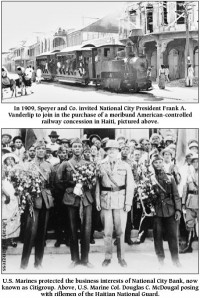
US Marines occupied Haiti – 1915 to 1934 to protect business interests of National City Bank of New York now Citigroup. Photo Source: Haitinominustah.info
The world can see what’s happening. Saw it in Bosnia. See the role of the NGOs since the fall of the Berlin Wall. In Central Asia, the Caucasus, Afghanistan, Iraq, Ukraine, Turkey, Congo, Rwanda. But no one sees. The colonial narrative on Haiti comforts the stranger (Mundele) and his collaborators. The quiet genocide in Haiti unfurls in plain site, just as it does for Black America, for Africa.
Haitians scream. Africa screams. The poor of all the constructed races scream in terror and abuse.
In Haiti, our insides are burning from Clorox hunger, from over half-a-century of USAID destabilization policies, from NGO false charity disembowelments and US psych ops warfare on every level. Our lungs burn from inhaling expired tear gas. Our skin, eyes, nose, mouth and breathing passages are cooked from shouting our protest into the fog of US tyranny boiled in expired (2002) chemical agents thrown at us for years and years by the UN/PMSC mercenaries and their US militarized Haiti police.
On this one hundred year anniversary of the European colonist’s attempt to re-take Haiti by taking away our gold reserves, dominating every sector, Haitians fight on. Die from the fight back, from the material deprivations, the psychic injuries. Or, UN cholera and the basic denial of human rights. (See the Èzili/HLLN website.)
From the womb to the tomb, our lives is about this David vs. Goliath struggle. But there is a life beyond Black oppression that Africans, connected to the womb, live that’s so rich in soul, our oppressors want to take it too, climb into it too. But without letting go of white supremacy.
The Ancestors’ legacy: Liberty or death, keeps us sane and free.
The African who became Ayisyen in the land of the Tainos left us the template for beating white supremacy in Haiti. It’s in the Bwa Kayiman call that began the Haiti revolution centuries ago. It’s “Kanga Mundele, Kanga Bafyòti, Kanga Ndòki, Kango yo“.
We must stop the white nations/settlers, the Black collaborators/opportunists and all their evil forces (Ndòki). We must tie up, stop, excise, dismantle, marginalize all three to win lasting change for ourselves, for humanity.
No. We’ve not forgotten the Citibank boys theft one hundred years ago, carried out at the point of US Marine guns (Ndòki). Neither shall we forget the blood of the last Haiti demonstrator staining Desalin’s land to opposed despots, tyrants, enslavers – US occupation behind UN guns.
When we’re dust, the next Haiti generation will carry forth and avenge the injustices for the Starlights we’ll be and that same sacred Earthlight our generation gives voice to.
Moonlight’s great sun heralds Desalin worldwide. Pierre Sully lives on in every Haiti protestor facing Napoleon’s newest reincarnated colonial army, abroad and at home. Kapwa Lamò does not have the luxury to grieve what’s been lost. Think of the dignity his glory shines upon the awaken heart. Charlemagne Pèralte, Haiti reMEMBERs itself in you.
Alaso Ayisyen, sa ki mouri nap vanje yo.
Èzili Dantò, HLLN
December 17, 2014
The Plantation Called Haiti: Feudal Pillage Masking as Humanitarian Aid
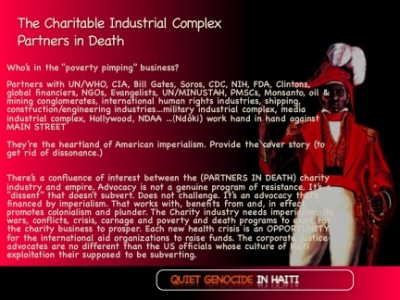
NGO/Charitable Industrial Complex are the crisis caravan: The poverty pimping business ”advocacy & activism used to maintain the status quo
***
Join the Free Haiti Movement –
“Like” our Facebook Page. Follow us on Twitter and this website ezilidanto.com/zili for Haiti news and analysis
Become a $12 per month sustaining member to Ezili’s Work/HLLN Haiti news and analysis. Help give voice to the VOICELESS
The Haiti People’s Agenda:
– Free all political prisoners in Haiti
– Departure of Martelly/Lamothe regime
– Haiti Senate: Impeach Martelly to Avoid a Bloodbath and Further Unconstitutionality
Formation of a transitional government chosen by the people not foreign powers
– Create electoral council based on article 289 of the Constitution
– Void SOFA : End US occupation behind UN mercenary guns
– Void all the Martelly Lamothe Decrees and all “laws” imposed on Haiti under occupation, stop the corruption
– For Haiti to invest the mineral riches and assets of the country in the local economy and thus
– An end to unfair US-Euro trade in Haiti and the NGO invasion that’s mostly humanitarian imperialism.
– An accounting of the Haiti Interim “Hillary and Billy” Reconstruction funds, collected in the name of suffering Haitians.
UN uses the Darren Wilson/George Zimmerman defense: UN felt threatened that’s why they ambushed from a side street and shot at unarmed Haiti protestors with live ammo and tear gas that expired since 2002.
On Haiti, ICP Asks UN of Peacekeeper Shooting At Protesters, Spox Wonders If Soldier Felt Threatened
“On the eve of the 100 the anniversary of the stealing of Haitian gold reserves and the start of the first US occupation of that country, and amid the growing mobilization and repression in the face of the political crisis – including already several people killed and the reincorporation of MINUSTAH forces in the repression against the thousands who are demonstrating almost daily, some twenty regional organizations and networks in Latin America and the Caribbean manifest their solidarity with their Haitian counterparts. They pronounce themselves in support of the Haitian people’s struggle for sovereignty and self-determination and their demands for an end to the recolonization and all interference in the internal affairs of the country, the immediate withdrawal of the occupying troops and the end of MINUSTAH, and the restitution of the stolen reserves and reparations for the crimes of all the occupations, including the deadly cholera epidemic. ” – 100 Years of Occupation – 100 Years of Resistance : Regional networks and organizations manifest solidarity with Haiti
Haiti Oligarchy
Haiti Mercenary Families/The Subcontractors
Bigio
Haiti economic elite families adapting to new competition
Haiti’s Enslavement: The Ruling Oligarchy and World Profit-over-People System
“One of the myriad ways that whites control the “race relations” conversation is to delegitimize or at the very least minimize analysis of their history of oppression. A favorite ploy in this exercise is to “flip the script,” as it were, so that all critiques – particularly by Blacks – of historical or current white supremacy are immediately condemned as, at best irrelevant and at worst, oppressive to them. They thus not only obscure and deny white agency in black folks” oppression, but position themselves as the true and still beleaguered victims of racism.” — Is White Supremacy a Mental Disorder? by Herb Dyer / December 16th, 2014
******
Where Does Haiti Fit in Citigroup’s Corporate History?
Jun 13, 2012 Peter James Hudson, June 13, 2012 Source: Bloomberg View
Citigroup Inc.’s online timeline commemorating its 200th anniversary presents a story of achievement, progress and world-uniting vision, but it says little about the Republic of Haiti — and no wonder.
Citigroup’s history in Haiti is remembered as both among the most spectacular episodes of U.S. dollar diplomacy in the Caribbean and as an egregious example of officials in Washington working at the behest of Wall Street. It’s also a story marked by military intervention, violations of national sovereignty and the deaths of thousands.
In the early 20th century, the National City Bank of New York, as Citigroup was then called, embarked on an ambitious and pioneering era of overseas expansion. Haiti emerged as one of National City’s first international projects. In 1909, Speyer & Co. invited National City President Frank A. Vanderlip to join in the purchase of a moribund American-controlled railway concession in Haiti.
Vanderlip agreed and the purchase turned out to be a “small but profitable piece of business” for the bank. But Vanderlip wasn”t interested in the acquisition for its short-term returns. He thought the stock would give National City a “foothold” in the country that could lead to a risk-free and profitable reorganization of the Haitian government’s finances.
Graft, Malfeasance
The next year, the government canceled the contract of the Banque Nationale d”Haiti — giving Vanderlip the opportunity he sought. Chartered in 1880, the bank was owned by France’s Banque de l”Union Parisienne and was contracted by the Haitian government to finance the national debt and handle the fiscal operations of the state. It was continually dogged by scandal. Haitian politicians accused its directors of graft and fiscal malfeasance (at one point its foreign managers were jailed) and local political aspirants saw the bank’s currency reserves as a bounty for winning political office.
When a new contract was drawn up, the U.S. State Department intervened, claiming it placed an unfair burden on the Haitian people while giving too much leeway to the French to intervene in Haiti’s internal affairs. They also argued that the new contract didn”t represent the American interests that were then gunning for a share of Haiti.
As a result of State Department pressure, a new institution, the Banque Nationale de la Republique d”Haiti, was chartered. The Banque de l”Union remained the majority shareholder, but National City — alongside a number of other U.S. banks and a German one — was offered a minority interest.
Executive decisions at the Banque Nationale were made by a committee split between the Banque de l”Union in Paris and National City in New York. Chairman of the New York committee was Roger Leslie Farnham. He had spent a decade working as a lobbyist for the corporate-law firm Sullivan & Cromwell LLP before Vanderlip recruited him to National City in 1911. Farnham lobbied officials in Washington on behalf of the bank, and eventually took charge of all its Caribbean operations, including in Haiti.
With the onset of World War I, French interests in Banque Nationale receded. Farnham assumed a large role in its direction while National City slowly began buying out its stock. At the same time, Farnham was becoming a major influence on State Department policy in Haiti.
American Interests
In 1914, Farnham, who once described the Haitian people as “nothing but grownup children,” drafted a memorandum for William Jennings Bryan — then U.S. secretary of state — arguing for military intervention as a way of protecting American interests in Haiti. Sending troops, Farnham insisted, would not only stabilize the country, but be welcomed by most Haitians.
That summer, Bryan cabled the U.S. consul in Cap-Haitien, stating that he “earnestly desired the implementation of Farnham’s plan.”
Meanwhile, Farnham and National City worked to destabilize the Haitian government. They refused to pay government salaries over the summer, and in December they ordered the transfer of $500,000 of the republic’s gold reserves to National City’s vaults at 55 Wall St. The gold was packed up by U.S. Marines, marched to Port-au-Prince’s wharfs and shipped aboard the USS Machias to New York.
The bank argued that they owned the gold contractually and were bound to protect it from possible theft. The Haitians saw it as robbery, pure and simple, and indicative of a growing threat to the republic’s sovereignty.
Threat turned to fact on July 28, 1915. On that day, U.S. Marines landed in Haiti and initiated a period of military rule that would last 19 years. The immediate justifications for intervention included fears of encroaching German influence and a desire to protect American life and property — especially after a spate of factional violence that included the dismemberment of the Haitian president in response to a massacre of his political opponents.
Once the occupation began, it was rationalized as a necessary measure to teach Haitians the arts of self-government. Sanitation reforms were enacted, education was promised and public-works projects were planned. In the short term, however, the most pronounced labor of the Marines was counterinsurgency. They waged a “pacification” campaign through the Haitian countryside to suppress a peasant uprising against the occupation. It left thousands dead and countless others tortured, maimed or homeless.
Lucrative Business
For National City, the occupation provided ideal conditions for business, offering the bank the authority to reorganize Haitian finances just as Vanderlip had envisioned in 1909. By 1922, National City had secured complete control of Banque Nationale and floated a $16 million loan refinancing Haiti’s internal and external debts. Amortization payments were effectively guaranteed from Haiti’s customs revenue, and the loan contract was backed up by the U.S. State Department.
Haiti proved a lucrative piece of business for National City during the 1920s. Yet by the beginning of the next decade, it began to reconsider its ownership of Banque Nationale. Following protests that pressured the State Department to disentangle itself from Haiti, the Marines departed in 1934.
National City soon followed. Fearful of losing the State Department’s protection, and wary of public criticism of their activities, the bank’s executives sold Banque Nationale de la Republique d”Haiti to the Haitian government in 1935 — reluctantly closing a profitable chapter of Citigroup’s history.
(Peter James Hudson is an assistant professor of history at Vanderbilt University. The opinions expressed are his own.)
Add a comment:
Powered by Facebook Comments


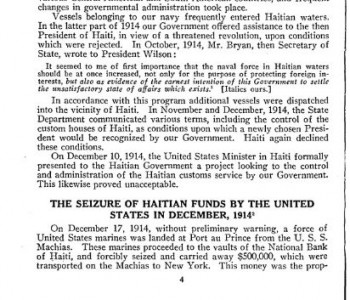
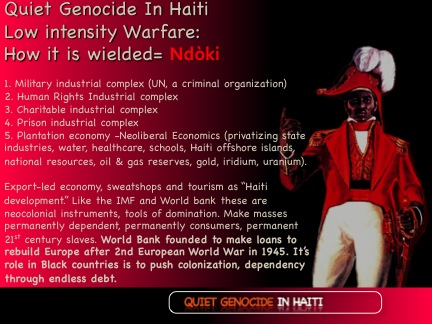
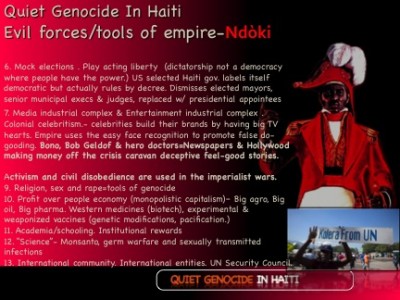
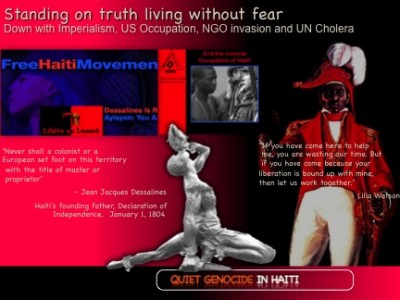
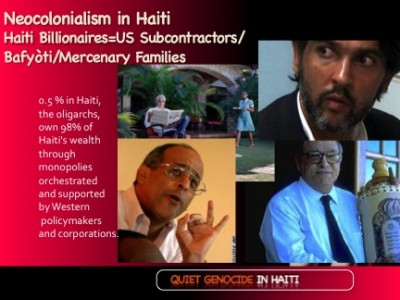





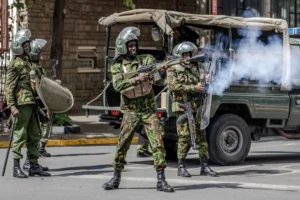

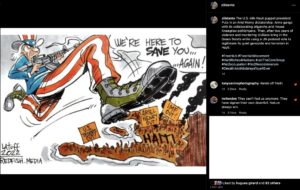
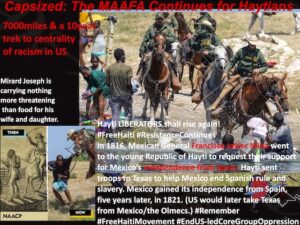


No Pings Yet